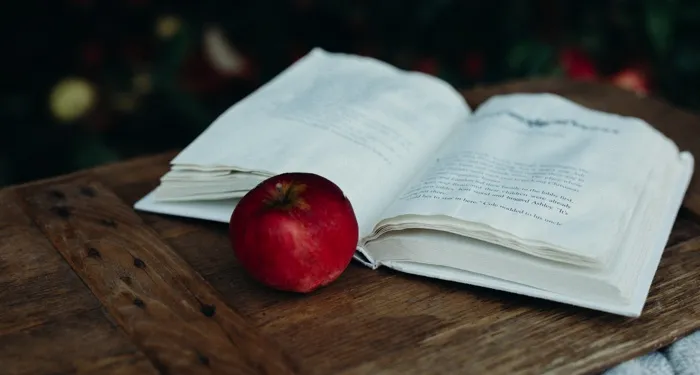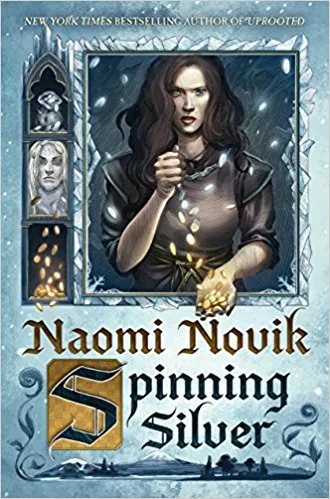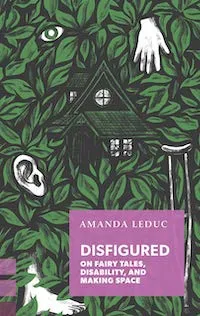
8 of the Most Violent, Original Endings of Classic Fairy Tales
Content Warning: rape, murder, cannibalism, torture, antisemitism, ableism, incest
The original versions of fairy tales were often more like Game of Thrones than Disney: filled with rape, incest, murder, and cannibalism. They also weren’t primarily for children. Women shared cautionary tales like “Bluebeard” about a husband who murdered all his previous wives.
The Brothers Grimm (Jacob and Wilhelm) collected folk tales from oral and written sources and published them as children’s stories in Germany in 1812. By their second edition in 1857, they’d made the tales more kid-friendly. In 19th century Europe, this meant happy endings and no sex, but still loads of violence. They often added Christian moral lessons. In a 2015 Book Riot article, Morgan Jerkins wrote that fairy tales with explicit morals offer overly simplistic perspectives on good vs. evil.
Fairy tales often pass down cultural biases, both implicitly and explicitly. The Grimm story “The Jew in Thorns” (which I won’t link directly) is so blatantly antisemitic it inspired Nazi propaganda. Marginalized authors often address or subvert the bigotry in the original stories through fiction or criticism. Spinning Silver by Naomi Novik is a wonderful retelling of “Rumpelstiltskin” with a Jewish author and a Jewish protagonist.
Some biases are much subtler. Racism, sexism, antisemitism, fatmisia, and ableism are baked into Western European cultural beauty standards. Therefore, using beauty to symbolize morality and “ugliness” to represent evil reinforces these biases—even when fairy tales try to reverse this message. I blogged in 2020: “Despite the exceptions to the rule, they still create an association between beauty and good behavior that children wouldn’t have had otherwise.” While they’re often described as conventionally beautiful, Cinderella’s stepsisters are also called the “ugly stepsisters.” Appearances should never be linked with morality in the first place.
Where Did Fairy Tales Come From?
Traditional fairy tales may also be much older than previously assumed. A 2016 study led by Jamshid Tehrani found common roots of popular fairy tales dating back 6,000 years around the world. It may be impossible to pinpoint exactly how old folk tales are, but they have long oral traditions and share common themes.
In her interview for Netflix’s “Fairy Tales Explained” in 2021, Maria Tatar said many folklorists have a love/hate relationship with Disney. Disney made fairy tales more homogenous, “erasing all of those local variants,” Tatar said. Disney’s versions have become predominant. However, many researchers love that Disney popularized fairy tales for new generations.
Most fairy tales don’t have a single original version or author. When possible, I’ve tried to specify which versions contain which endings.
Rapunzel: The Prince is Blinded, Then Magically Cured
The earliest known written version of Rapunzel is Petrosinella, from The Pentamerone by Giambattista Basile, published in Naples in 1634. Around 1700, Charlotte-Rose de Caumont de La Force published a French version, Persinette. The prince jumps from the fairy’s tower, falls into thorns, and is blinded. Persinette’s tears heal him. The Brothers Grimm called Persinette Rapunzel in their 1812 German version. In 1857, they changed the fairy to a sorceress but kept the detail of the heroine’s tears healing the prince. This is an example of the magical or miracle cure trope.
Sleeping Beauty: Rape, Murder, Cannibalism, Infidelity
The 14th century French romance Perceforest has many story elements of “Sleeping Beauty.” “Sun, Moon, and Talia,” from Basile’s Pentamerone, is the earliest known version of the full fairy tale. In the early versions, the protagonist is presumed dead—not merely in an enchanted sleep. So, when a king rides by and rapes an unconscious Talia, this also has overtones of necrophilia. Then she gives birth to twins while she’s still comatose. Trying to breastfeed, one of the babies removes the poisoned splinter from her finger.
The king’s wife (yep, he’s already married!) becomes murderously jealous of Talia. She tells her cook to murder Talia’s children and serve them to their father, but the cook tricks the queen by slaughtering lambs instead. Talia has fallen in love with her rapist. The story ends with Talia, the king, and their kids forming a happy, loving family.
Snow White: More Cannibalistic, Murderous Family Members, Plus Torture
The Grimms published the first written version of “Snow White,” but there were many oral versions and similar Armenian, Turkish, Italian, and Scottish stories. In the Scottish tale “Gold Tree and Silver Tree” and the first Grimm version, the girl’s birth mother (not stepmother) wants to kill her and eat her organs. Disney barely glossed over this part, removing the cannibalistic intent. Disney’s Evil Queen merely wants Snow White’s organs as proof she was murdered. There, fixed it!
In the Grimms’ story, “Little Snow White” is seven years old when the Queen first decides to kill her. She lives with the dwarfs for an unspecified time, then is presumed dead before she’s revived and marries the prince. Most people believe about ten years have passed.
Amanda Leduc interviewed me (along with many other people) about disability in fairy tales for her 2020 book Disfigured: On Fairy Tales, Disability, and Making Space. Rebecca Cokley, who was also interviewed in the book, said she and her family frequently receive ableist harassment as Little People. Often, this is directly inspired by movies like Disney’s Snow White and the Seven Dwarfs. Even recent fantasy novels conflate people with apparent disabilities, especially dwarfism, with imaginary fairy tale characters.
The Grimms’ “Snow White” contains a glass coffin and a poisoned apple, like most later versions. Before giving her the poisoned apple, the Queen in disguise tries to suffocate Snow White with a bodice and poison her with a comb. At the end, the Evil Queen is forced to dance in red-hot shoes until she dies.
The Little Mermaid: A Chance At a Human Soul!
“The Little Mermaid” by Hans Christian Andersen is the only fairy tale on this list that originated from one author. Danish author Andersen wrote the original story, which was first published in 1836. It’s much more violent than later versions. Unlike Disney’s Ursula, who magically, temporarily steals Ariel’s voice, Andersen’s Sea Witch cuts the Mermaid’s tongue out. The mermaid’s new feet bleed as if knives were stabbing her with each step. She can revert to a mermaid only if she murders the prince with a dagger. Because she can’t force herself to kill him, she dies and transforms into sea foam. She might gain a human soul in around 300 years. In a moralizing twist, if children misbehave, this will take her longer.
Cinderella: Violence and Ableism
There are countless versions of “Cinderella.” Similar stories were found in ancient China, Egypt, and Greece. Ableism is a common thread in Western European fairy tales like the Grimms’. In the Grimm version of “Cinderella,” the stepsisters cut off parts of their feet to fit into Cinderella’s shoe. They deliberately make themselves disabled, thinking their lives will become easier as royalty, in a kind of trade-off. Then, birds pluck out the stepsisters’ eyes. A modern version that keeps this ending is the stage and movie musical Into the Woods. The Grimms’ ending depicts disability as a punishment, curse, or symbol of evil.
Little Red Riding Hood: No Happy Ending?
In 11th century Liège (present-day Belgium), a cleric and teacher named Egbert wrote down a precursor to this story. Charles Perrault’s 1697 French version ends with the wolf eating the child. She and her grandmother are not saved. While the Grimms usually added morals to the tales, Perrault’s version spells out a moral at the end. The Grimms added a happy ending to their story “Little Red Cap.” A hunter cuts the child and grandmother out of the wolf, who’d swallowed them whole. In Western Europe, the predator in the fairy tale is a wolf. In similar tales from East Asia, the predator is a tiger, and in West Africa, an ogre.
Beauty and the Beast: incest
This fairy tale is an example of what folklorists call the “animal bridegroom” type. They addressed concerns about marriage—often, a young woman is pressured to marry a man she didn’t choose. Similar stories can be found in India, China, Russia, and Norway.
Most elements of the modern French fairy tale, like Belle being bookish, originated in the 1740 French novel La Belle et la Bête by Gabrielle-Suzanne Barbot de Villeneuve. The novel ends in an incestuous marriage. After the Beast turns back into a prince, Beauty learns that she and the Beast are first cousins. In the 18th century European aristocracy, this isn’t a dealbreaker. In fact, it’s proof they’re a good match.
Goldilocks and the Three Bears: Set on Fire or Left on a Church Steeple?!
In this fascinating article, Mari Ness analyzes an obscure, early version of “Goldilocks and the Three Bears,” in which the bears set the intruder character on fire and impale her on a cathedral steeple. Other versions imply or threaten the bears might eat her. In early renditions, the intruder was an elderly woman named Silver Locks, not a little girl named Goldilocks. Instead of being a child too young to understand social rules, this character originally represented classist fears that poor people would break into wealthy people’s houses.
For a few fairy tales you may not have heard of, here are some unique fairy tales from around the world.













